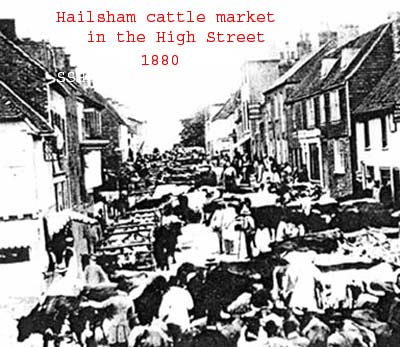Windsor Road - Hailsham
One hundred years of history
1902 to
2002

Town growth.
Windsor Road was built in 1902 at a time when Hailsham was seen as a thriving town. The 1871 census shows that the population of Hailsham was 2,429. By 1901 this number had nearly doubled in size to 4,197 living in the Hailsham parish. The 1911 census gives the population at the time to be 4,604. The census years from 1871 through to 1911 show that the parish of Hailsham nearly doubled in size, with nearly three hundred new buildings developed.
World War One.
Hailsham at the outbreak of the first World war had one hundred and eighty business men or self employed tradesmen, which also included farmers and public servants. The town also had men involved in the brick making trade, construction work and the rope industry. The town boasted a diversity of occupations and social groups at the beginning of the twentieth century.
World War Two.
The residence of Windsor Road would have seen many changes to their daily lives and to the town itself during the second world war. However, compared to London or even Eastbourne the effects of the war on Hailsham was limited. This can be seen in the record of bombs dropped on Hailsham. There were 1,225 incendiary and 110 high explosives during the whole of the war years. Although Hailsham was well prepared for an invasion, the Home Guard did not have to face an actual enemy and the incidences were very occasional compared to other parts of England.
Farebrother,while recalling the experiences of Hailsham during the second world war mentions Windsor road being bombed during a bombing raid. ‘One fell in Windsor road and set the gas main alight’. Miss Hunnisett, who was born in number 20, (now number 2) remembers the day that the bomb fell and recalls sixty bombs dropping in Hailsham on that day.
Hailsham was the centre of a rural area and regulations concerning agriculture did impinge heavily on the farming community. The real changes that people would have seen were what the farmers were allowed to grow. For example Knights nurseries switched from its usual output of garden plants to intensive food production on the outbreak of the war.
The railway.
The development of the railway in 1849 meant that the London, Brighton and South Coast Railway served the town and the surrounding area. Windsor Road was only a few minutes walk away from the railway station and this would have been a good selling point for buying a house near by. The growth of industry in the town meant that there would have been plenty of work available. Burfields, a rope making factory employed a large number of people and is still making rope to this day. In 1880 the railway was extended to Heathfield, which gave the occupants of Hailsham more of a choice in where they shopped and worked.
The occupants of Windsor Road were able to hear the trains going along the railway line and the houses on the east side of the road looked out onto open country side from their back gardens. The railway line was closed in 1968 due to Dr Beeching believing that the rural lines were uneconomical. The railway land was left undeveloped until 1980 when the station and good yards were demolished to make way for a housing estate. The cuckoo line which was the actual railway line was developed into a bridal and footpath, which now extends from Heathfield to Polegate.




